


The Earth’s Oceans are a wonderful yet mysterious place. With depths reaching over 36,000 feet, the ocean makes up 99 percent of the planet’s living space. Yet we know more about the surface of Mars than we do the sea floors. This leaves us with a vast conglomeration of unknowns. And while we do know a great deal with the help of modern oceanography, questions remain. For example, what do we know about the numerous lifeforms who call the sea home?
How do they live in such a gargantuan, wet mass? And what is their relationship to these dry land dwellers?

This book will explore these questions and others, as we swim through a brief compendium of creatures who call the sea their home. And so we look...Below the Surface.
Some Cnidaria are known as what are called “Swimming Medusae”, also known as “Jellyfish”.

Cnidaria!
Some Cnidaria stay the way they are born their entire lives, either as Jellyfish, or as Polyps. But many are born one way and transition into the other, as in they could be born as Polyps, but become Jellyfish later in their lives, and vice versa.
Cnidaria are marine organisms that share a basic structure. Stinging tentacles with cnidocytes, used for paralyzing their prey, and two layers composing their bodies separated by a jelly-like layer called the mesoglea.
Other Cnidaria are called “Sessile Polyps”. this including such organisms as Coral and Sea Anemone.
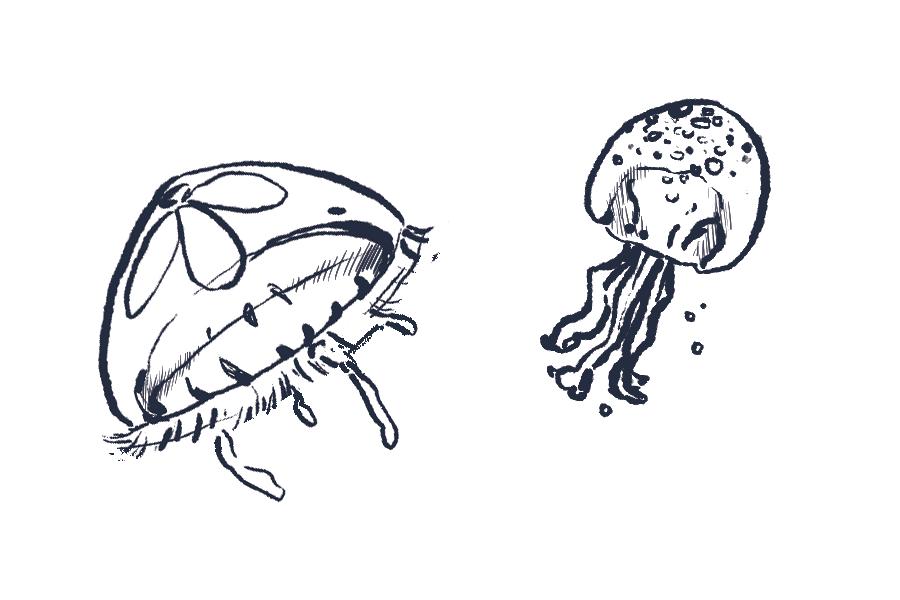
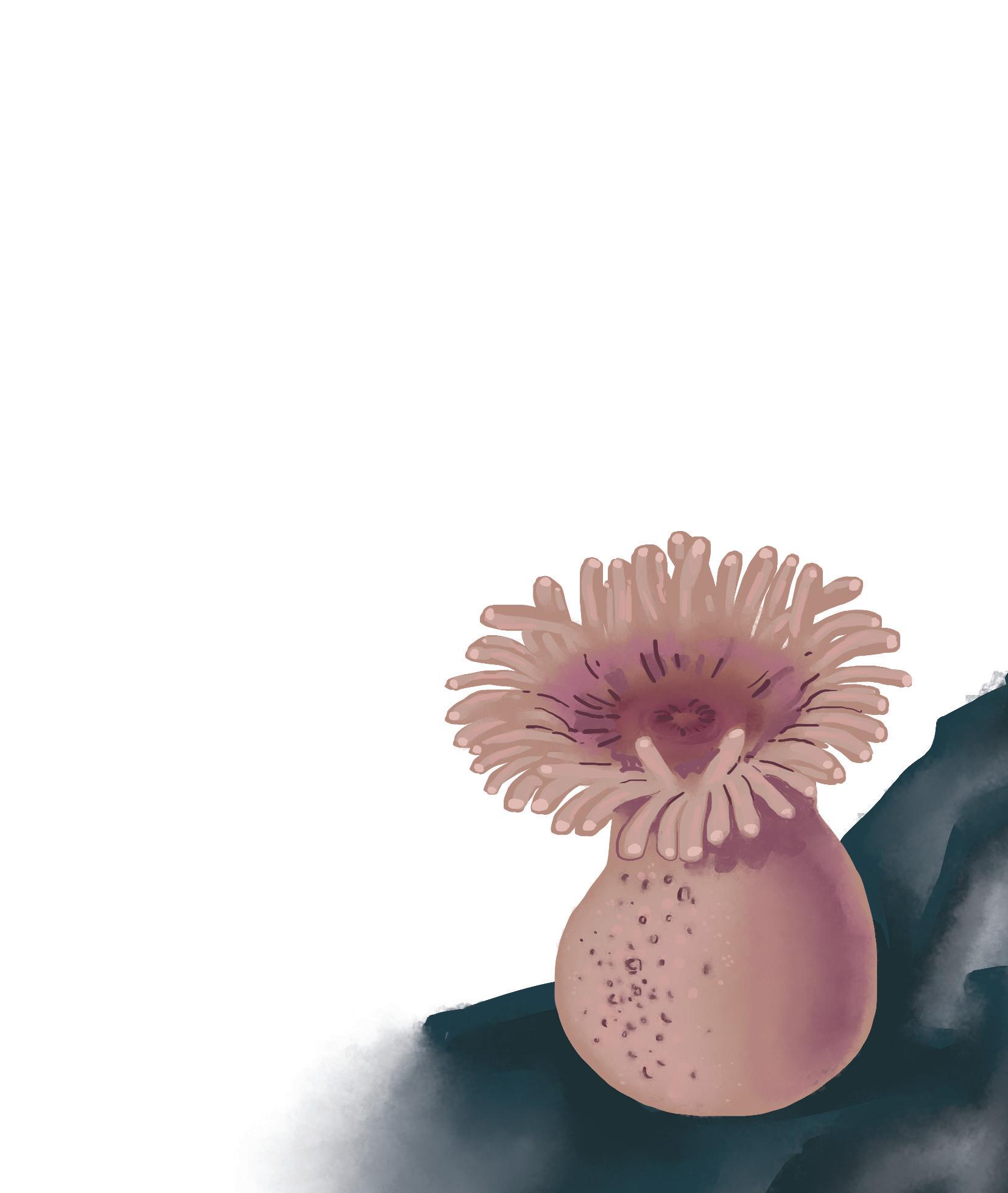
Abaia

Abaia, also known as “Great Eels”, are introverted creatures that lurk around the depths of the Fiji, the Solomon and the Vanuatu islands. They can greatly exceed a length of 13 feet but unlike their cousins the Moray eels, they are herbivores. In fact, the Abaia has been known to exhibit extreme control over the mass of sea they inhabit, making them protective of the waters and the other creatures that reside within it.

There are accounts of Abaia, in response to fishermen killing their fish, lashing out in revenge. They can cause great crashing waves that have been known to sink ships, or just as threatening rain storms to plague their enemies. To be put plainly, Abaia hold grudges.
Parrot Fish are humorous yet helpful creatures of the sea. They can take on numerous different bright collerations, but some things they all have in common are their bird-like beaks, and odd excretion habits.

Parrot Fish
They are known to be Omnivores, eating just about anything, although their favorite meals are coral. Their beaks bite through coral’s hard skeleton like crackers, and their throats lined with grinding teeth help them get at the delicious algaefilled polyps inside. Although, because of their prefered diet, they are often considered a threat to already diminishing coral beds. But their beaks aren’t the only thing the Parrot Fish have in common with birds, because like birds, Parrot Fish also travel in flocks, only they call it traveling in schools, as Parrot Fish are more academically inclined.
Each Parrot Fish contributes roughly 11,000 pounds every years. Pounds of what? Poop. The coral the Parrot Fish eat is converted within themselves into the sand we are familiar with walking on when going to the beach, and on the ocean floor.
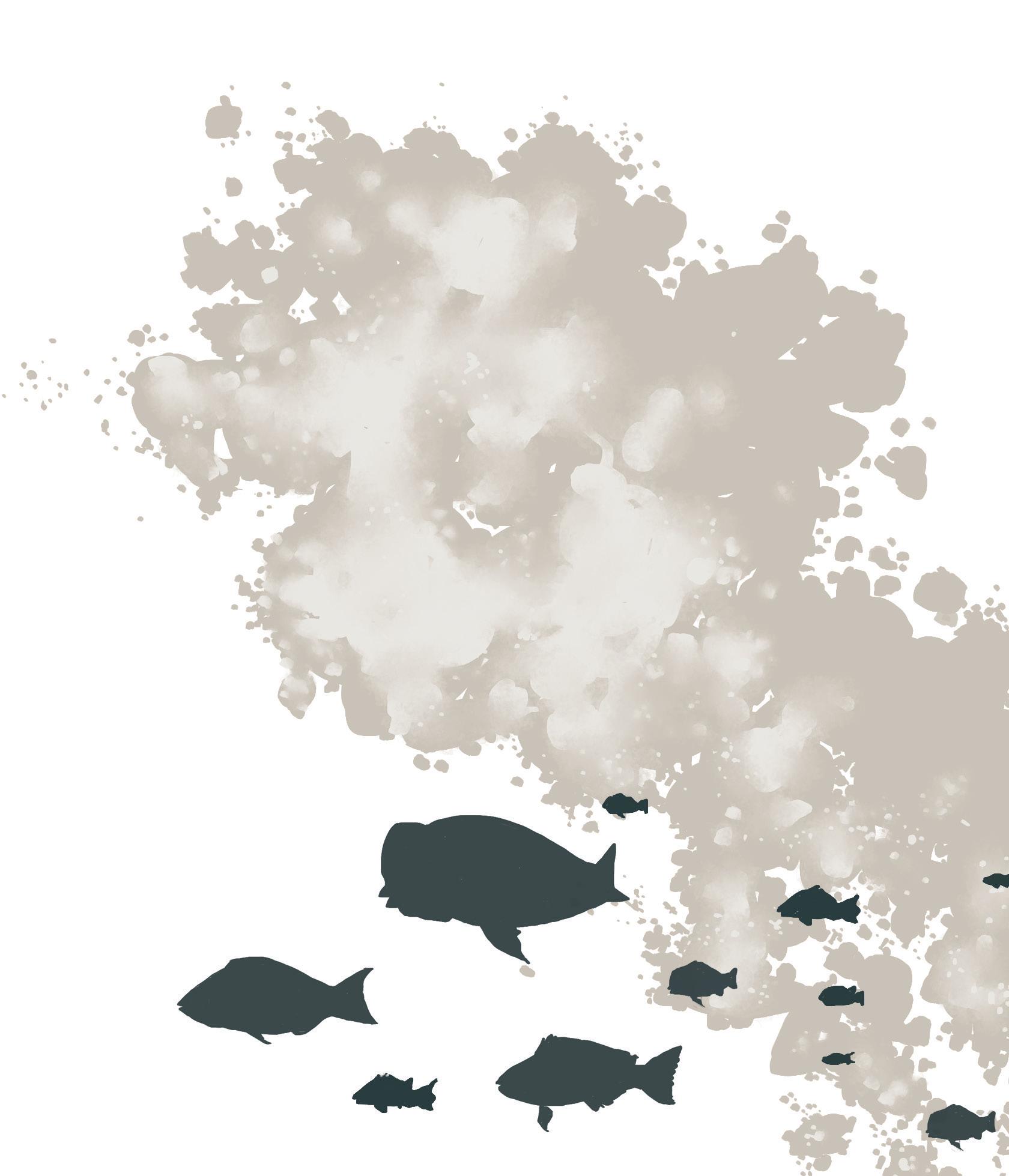
Ningen

The first sighting was made around the 1960’s by a group of Mariners from Japan, and more have been made since, though few and far between. The Ningen have been described as between 20 and 30 ft long, with a pale white complexion, very similar to that of a white whale. As well they’ve been described as having a humanoid upper torso, with a bulbous head, long arms and five fingers on both hands, with a whale-like lower tail. Their faces supposedly are composed of only 2 large dark eyes, and a small slit for a mouth.
Ningen are as mysterious as the night sky, and like the stars, they inhabit a cold and unforgiving space. Ningen are known to populate the waters of the Antarctic Ocean, and are believed to be nocturnal creatures, as most sightings of them have been made during the late hours of the night. They are believed to be very private creatures, creeping across the depths during the day and only coming up to the surface of the water during the evening for specific reasons. What those reasons are are not yet known.

Sharks are notable sea creatures for their prominence within the human eye. But there are many different kinds of Sharks, largely characterized by their cartilaginous skeleton, meaning they have no bones. They also have neverending teeth, meaning they grow new teeth throughout their lifespans. Many as well, but not all, are apex predators, meaning that they are at the top of their food chain. Some of these kinds of sharks include the Tiger, the Hammerhead, the Thresher, and most famous, the Great White. And while all Sharks are native to the ocean, some have been known to have developed ways to survive for a time in freshwater, specifically the River Shark and the Bull Shark. As well, many Sharks are social creatures, traveling together in pairs or entire schools, like the Hammerhead. Although some do prefer to be Lone Hunters, and will travel entirely alone for a majority of their lives.

Sharks
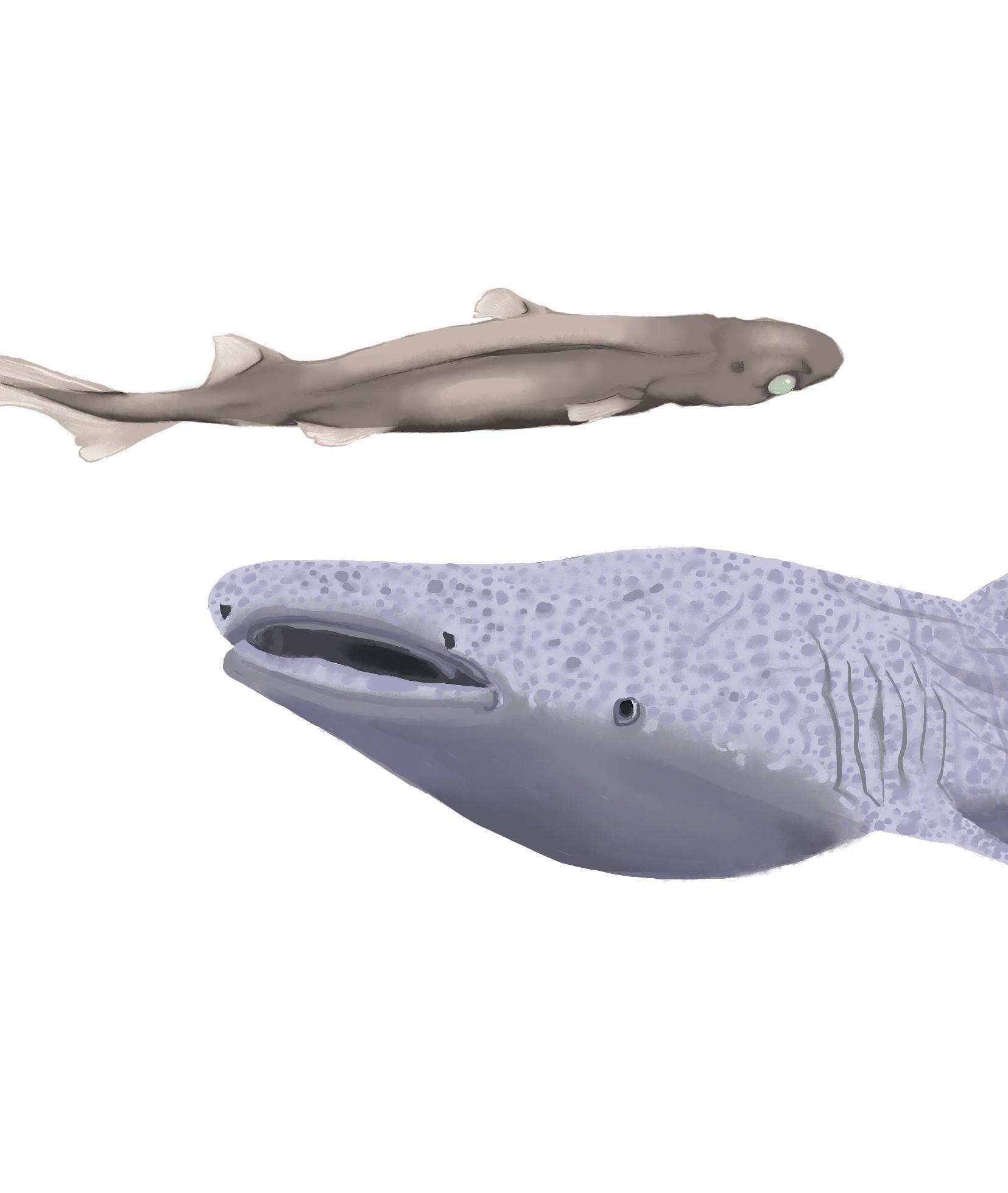
Sharks come in greatly varying shapes and sizes, the smallest kind of shark being the Dwarf Lantern Shark, and the Largest being the Whale Shark.
Qalupalik
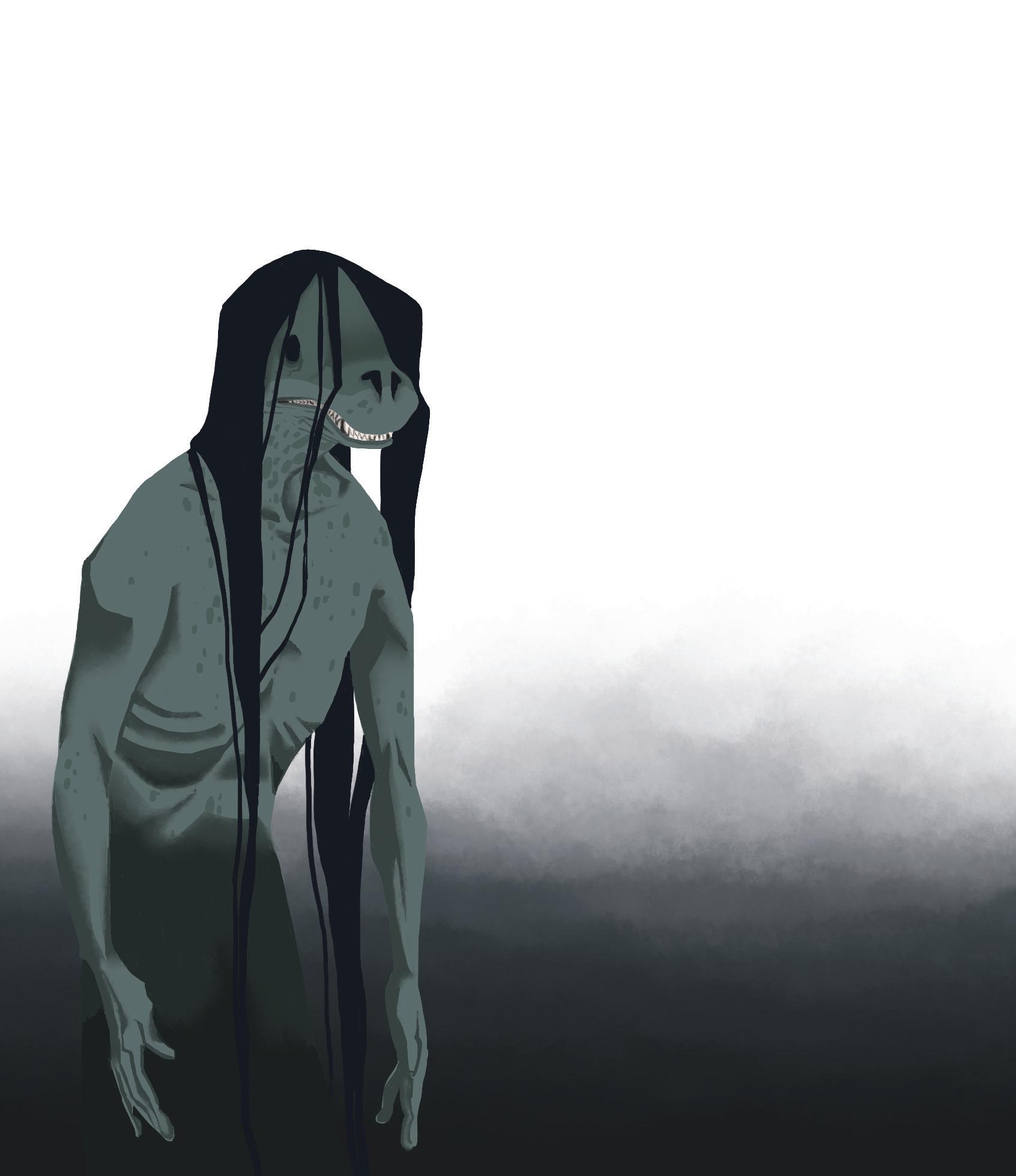
Qalupalik, like Ningen, are known to favor colder climates, although they do prefer occupying areas nearest to icey shores. They are well known for both their habits and their appearance, both shocking.

Qalupalik are human-like, but with notable differences. For instance, they have long, dark hair and fingernails, as well as green hued skin. And besides for their appearance, Qalupalik can often get a bad reputation from their curious habit of taking children that they stumble upon and find alone. Although this has been hypothesized to mean that they have a strong parental relation with their young, and will adopt the young of other species. They can also be found by following their staple humming towards the waters, or they will also often hum to let others know they are near. This has been documented as an imperative communication habit between both themselves and humans.
Starfish

Starfish, also known as Sea Stars, can be found in just about every corner of the oceans. They can live in areas from the intertidal zones, to the great abyssal depths. Starfish as well are pretty spectacular for their unique abilities. For example, they can regenerate their limbs, or “arms”. Different kind of starfish have been known to have from five to over fifty arms. They move across the ocean floor by using a hydraulic system and tube feet found beneath them.
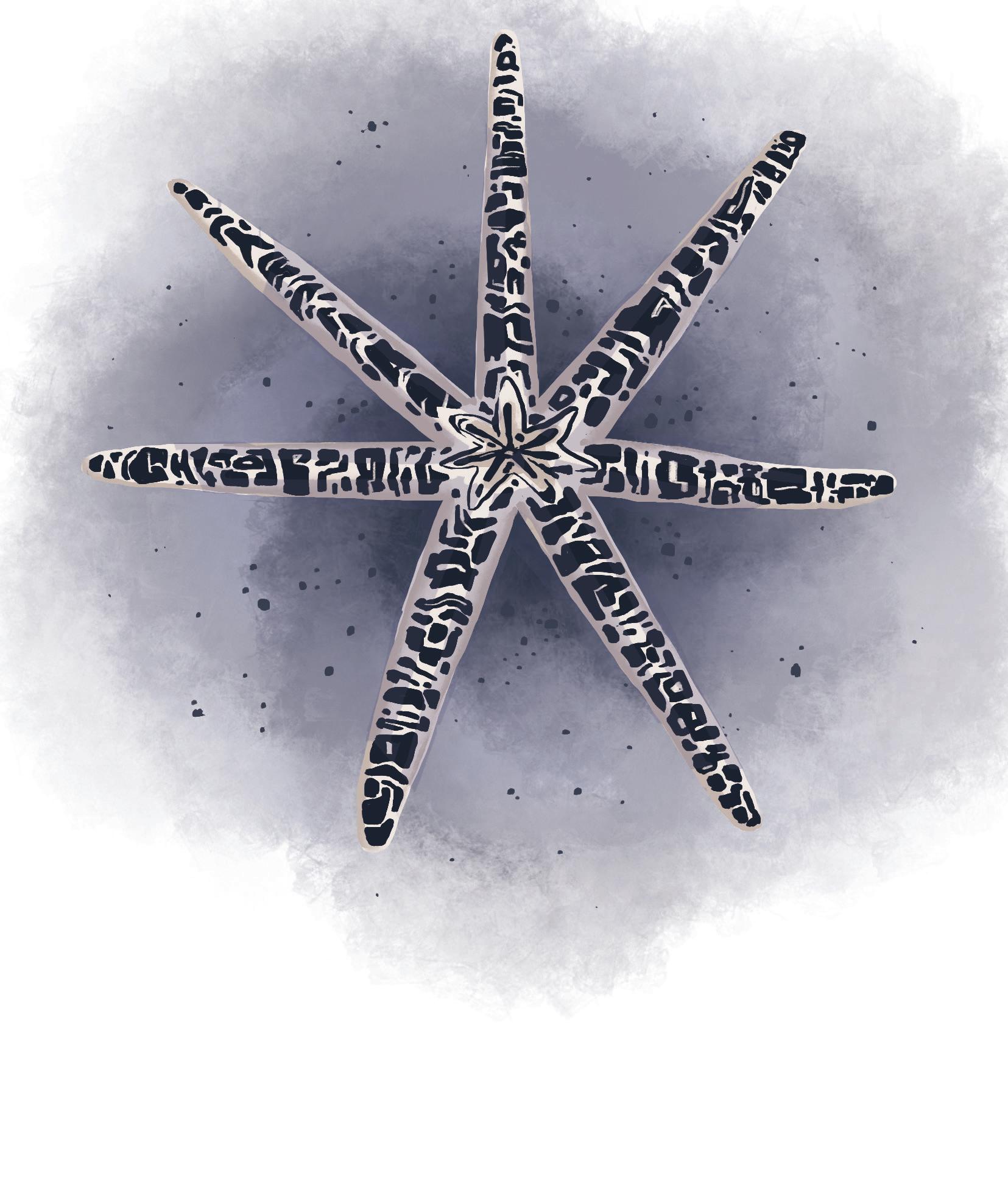
Starfish also have a very unique feeding habit, where they can eject their stomachs almost entirely from their bodies. By doing this, they can then liquify their prey and pull them back into their bodies, using their stomachs, in order to be consumed.
The Dobhar-chú are native primarily to Ireland, where their name can be translated to mean "Water Dog”, or they can also be known as “King Otters”.

Dobhar-Chu ,

Although unlike the domesticated counterparts of their distant relatives, the Dobhar-chú have been known to be unprovokingly aggressive. They are as well extremely protective of their partners or groups, as they rarely travel by themselves. They've often been known to employ a kind of battle tactic, where if they get into trouble fighting something off, they can call for help and one of their group or their partner will come to their defense.
For the most part they live in the sea, but they will come up on land to chase things, including humans. And unfortunately for someone trying to defend themselves from these creatures, the Dobhar-chú’s fur has been noted as having a sturdy, protective quality to itself.
Now that we’ve gotten our feet wet with our swift swim through the sea, and with a few of the creatures that live in it, it’s time to look closer. Delve deeper and learn about the oceans that make up more than half of our world. Visit your local Aquarium or Library, and see what more there is to learn, what creatures there are still to discover.

Goodluck
























